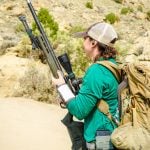As many will remember, shooting sticks were the earlier way for hunters to have a quick and stable position in the woods to engage game. Now, we have tripods. However, tripods are no longer only used for shooting off of, nor are only hunters using them. Let’s take a look at how they can be used, the different types of tripods available, and methods for their use.
How can a tripod be used?
Whether you shoot with a precision rifle, take out your AR to intermediate distances, or want to help someone spot impacts with tripod-mounted binoculars, there are so many different accessories and types of tripods that they have become a necessary piece of equipment for any gun toter.
Tripods assist with glassing.
When using binoculars or a spotting scope, you’ll need a stable position to see what you want to see, like impacts, misses, and environmental factors. You may also want to look through your binos from a standing or a seated position if you’ll be glassing for a long period of time. A tripod allows both a stable and an adjustable position.
Shooting Matches: If you are shooting any type of match you will want to have binoculars to find your targets before shooting, spot for others, and see the environmetals on the range. This goes for precision-rifle type matches and even multi-gun matches as targets are getting further and further when it comes to ARs with LPVO or red dot platform matches.

Range Officer: If you are a range officer at matches you will need binoculars or a spotting scope to call impacts or misses. A tripod will offer stability for your optic.
Hunting: Stable platforms for binoculars are huge in hunting as you don’t want shakiness when trying to find camouflaged animals. Having a tripod that serves as both a glassing and shooting platform is an easy decision in needed hunting equipment.
Shooting Classes: At firearms classes such as LPVO, AK, and precision rifle courses the class may want you to shoot at distance. They may only provide enough tripods and binoculars for a couple of people including the instructors. Having a tripod in the back of your truck will only help you be an asset to the class and help your training.
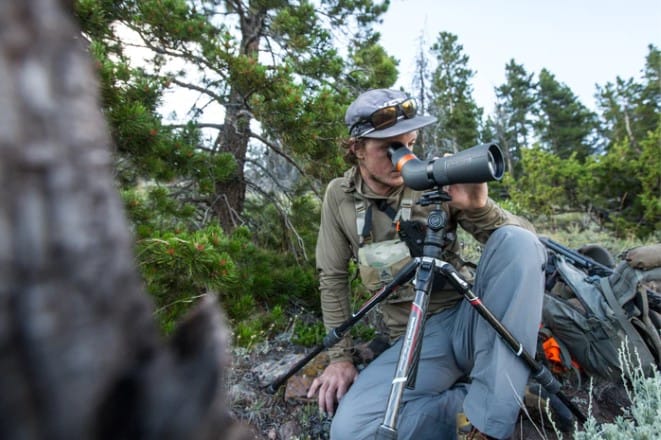
A tripod can be used as a shooting platform.
Tripods can also serve as a platform to shoot off of. There are many benefits of having this at your disposal.
Added height: Some tripods such as the Vortex Radian go from eight inches of height all the way to 67 inches. This gives you a lot of height that aids in seeing over grass and getting a better picture of your targets, as mirages can be heavier when you are closer to the ground.
No bipod: Some of your firearms may not have a bipod, thus making it pretty impossible to shoot in the modified prone position on the ground. While backpacks may suffice as a platform to shoot off of due to no bipod, a stable tripod is a much better option.
Greater stability over a bipod: Three legs are better than two. While having a bipod is a great way to stabilize your firearm, a tripod will take that stability a step further.
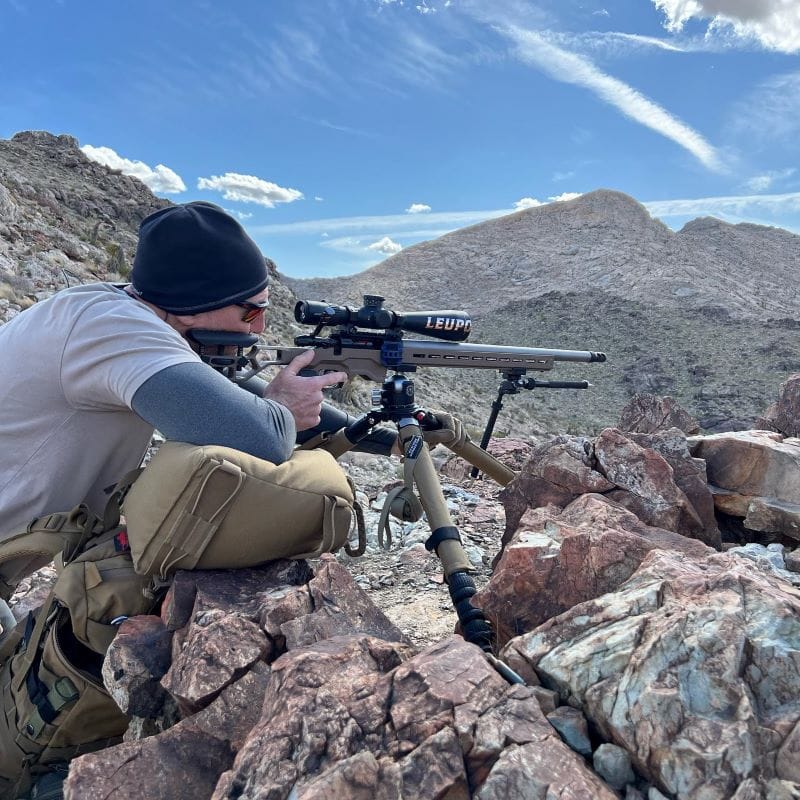
Hunting: Having a foldable tripod on a hunt allows for a stable shooting position off the side of a mountain or in an open field.
Field Matches: A tripod is actually a necessity when it comes to precision rifle field matches such as Competition Dynamics Steel Safari or National Rifle League Hunter. These matches will put you in awkward positions. You will need height and a stable platform to look for targets and shoot off of. A bipod won’t cut it.
Note: If you do intend to shoot off of your tripod, make sure it is strong enough to handle the weight of your firearm.
Methods for Shooting Off of a Tripod
Clipping in: Clipping into the tripod basically means that you are attaching your firearm to the tripod, instead of just resting it on the tripod. To do this there are attachments such as a hog saddle that attaches to the tripod and clamps around your entire rail. Or depending on the type of rail you have, there are accessories that clamp onto the bottom of your rail by the turn of a throw lever. The tripod will now be holding the firearm with little to no movement. This takes a little more time to set up but it is very stable.
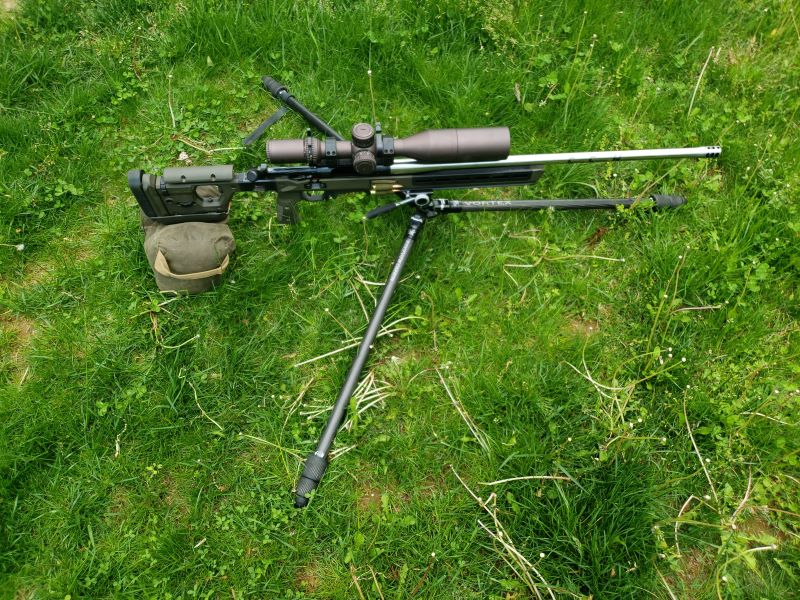
Tac Table and Shooting Bag: The other way to shoot off of a tripod is to use a tac table and shooting bag. This essentially creates a platform with more surface area on top of the tripod head. A tac table is a small table that clamps into your tripod head with the appropriate accessory. Place a shooting bag on top and now you have a solid platform to shoot off that is pretty quick to deploy.
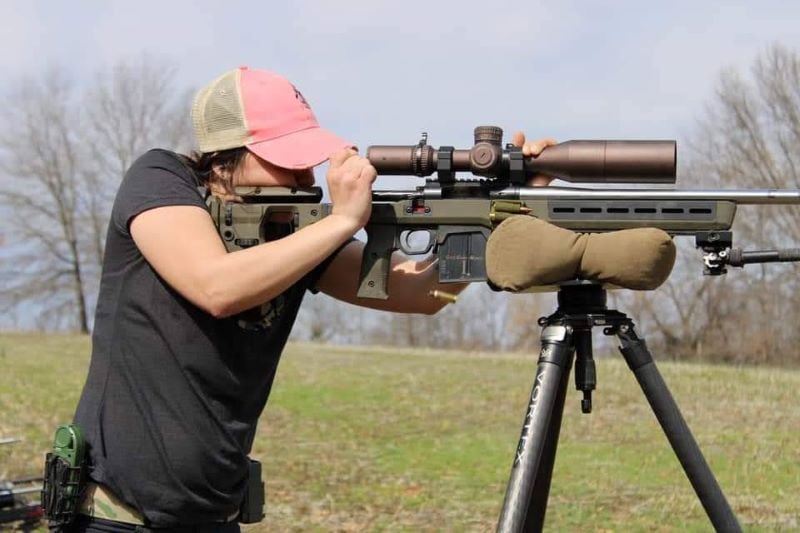
Mounting Other Tools on a Tripod
Some people use tripods for something totally different — the mounting of tools. A lab radar is one of the more popular things to go on top of a tripod. A lab radar measures the velocity of your bullet. It usually needs to be close to the muzzle and on a stable platform. Just put it on top of a tall tripod, and it can be moved toward the table on which the firearm that you want to chronograph is sitting.
A Kestrel is another type of tool that many shooters like to mount to their tripod as it reads the speed of the wind. Putting it on a moveable tripod head allows you to point the kestrel toward the angle that you will be shooting, thus getting an accurate wind speed and direction.
Some also like to mount both their rangefinder and their binoculars on a single plate on the tripod such as a MUB plate. The MUB plate can mount anything that has the same interface such as Picatinny, Manfrotto, or outdoorsman attachment accessories.
Types of Tripods
Now let’s talk about some differences between tripods. The type of tripod will usually be conducive to what you use it for.
The Material and Strength
Carbon Fiber tripods are very popular right now as they are light but still very strong and durable. Within carbon fiber tripods there are both lighter and heavier types of tripods. A lighter tripod will be better for mounting lighter items on top such as binoculars or a spotting scope. Tripods on the heavier side will allow for heavier guns to have a stable shooting platform. You never want to throw a heavy gun onto a super light or skinny tripod. It can topple under the weight of the gun. To find out the rating of the tripod look at “load rate” or “max load“ in the specifications of the specific tripod.
The Legs
Different tripods also have different leg adjustments. This usually means two things. One, what angles can the legs get to? Can the tripod legs angle out enough to allow for sitting positions all the way to standing? Also, how many sections are there to the legs? Some like two-section pulls, which means that there are two sections of each leg, and each section can be individually tightened. Many appreciate the quickness of getting the tripod deployed. There are also three or four sections of legs on tripods. Some like three sections because it allows for more adjustability in height, meaning it can get really short but also very tall.
When looking at the legs of your intended tripod, ensure that each angle position locks strongly and that each leg section tightens. If these sections don’t tighten well the tripod will collapse under weight.
The Head
The head of the tripod is a very important piece. It allows you to adjust the position of what you place on the tripod. There are a few different types such as a ball head or a pan head.
A ball head is exactly as it sounds, a ball spinning around on your tripod. This ball has three different tensioning knobs on it. These knobs control which way the ball can move, forward or back, side to side, and how much tension is on the ball. Some like to have enough tension so that the ball doesn’t fall, but not too much that it won’t move by hand as you are moving your binoculars. If you are shooting off of it, you will want it all the way cranked down on each knob.
A pan and tilt head allows for side-to-side and forward-backward adjustment. This is usually done with a simple tensioning handle. These are usually a little less expensive and have less fine adjustment but are much easier to use.
You are free to mix and match between companies when it comes to the tripod and the ball head.
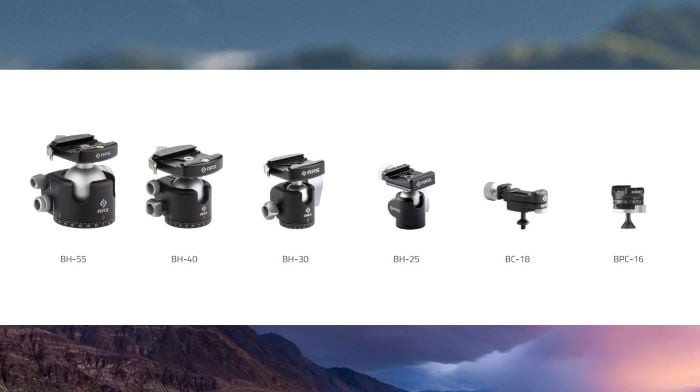
Whether your interests are in multi-gun matches, hunting, precision rifle field matches, or helping out at firearms classes, tripods are a great investment. One tripod can serve multiple purposes no matter where your interests lie.


